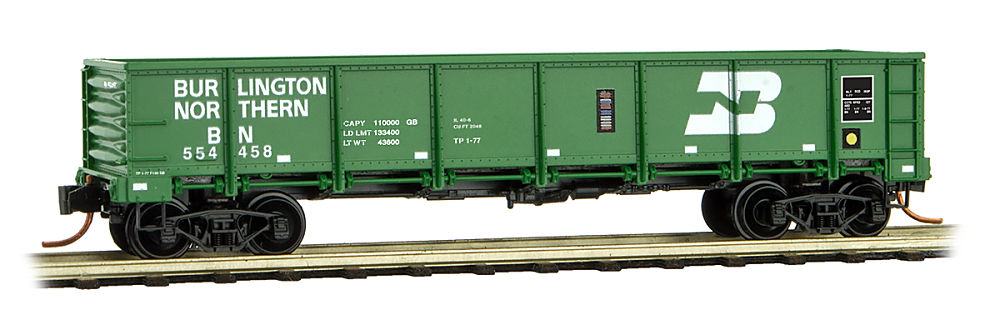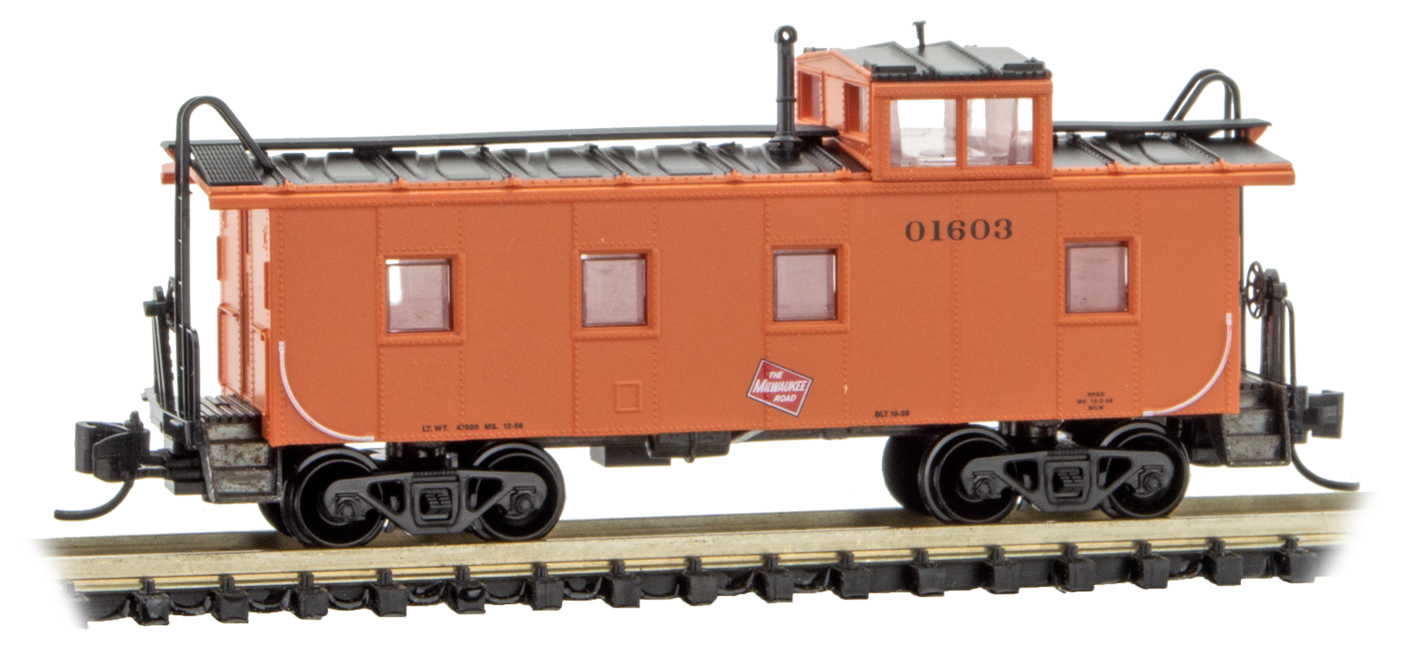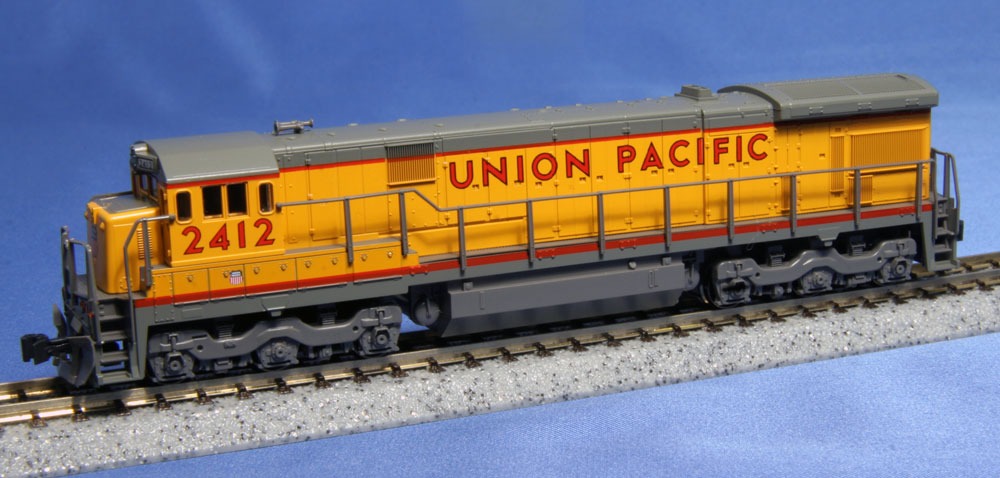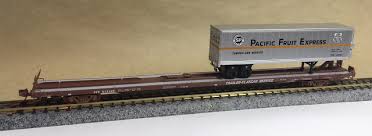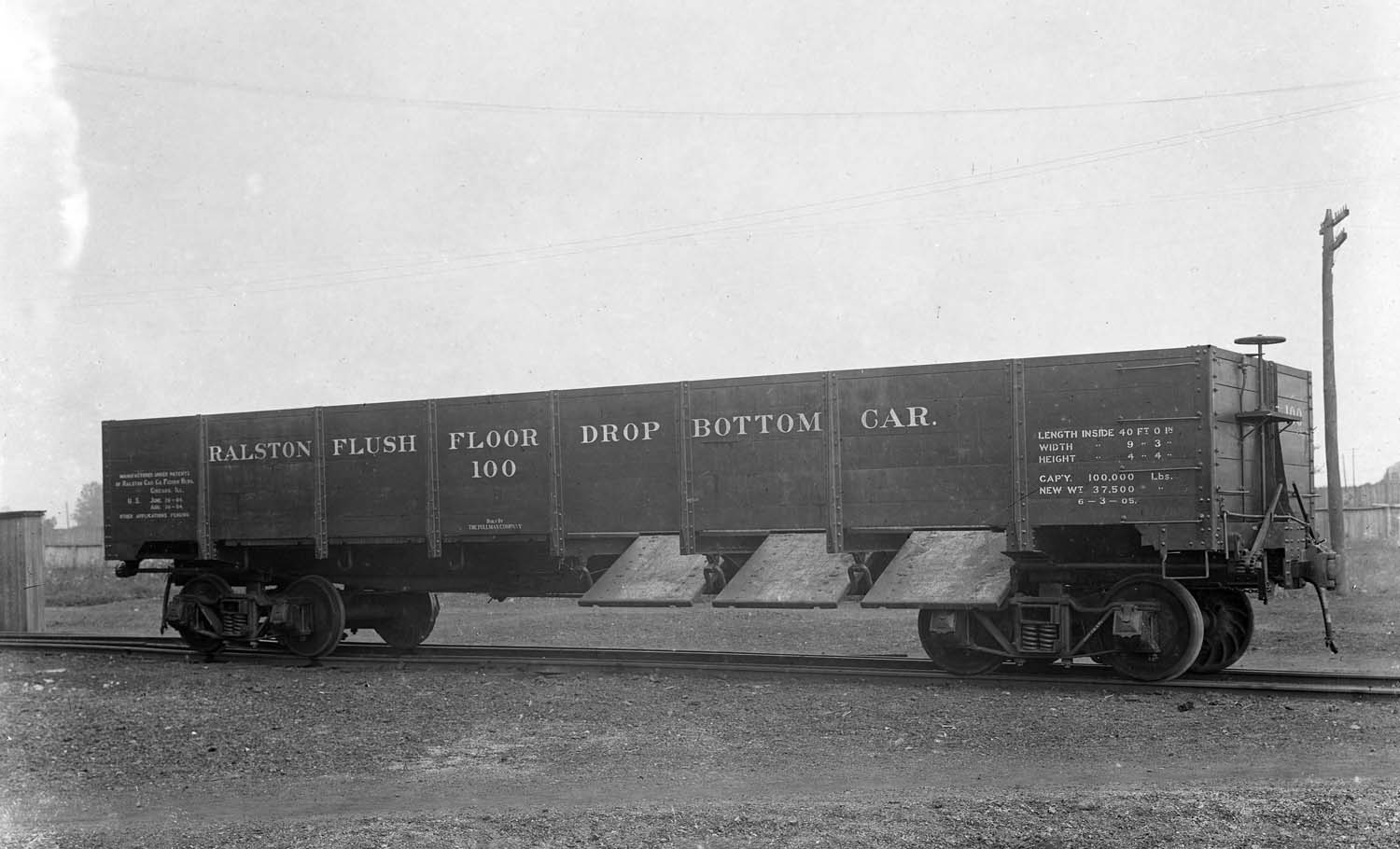Micro-Trains - 083 00 120 - Gondola, 40 Foot, Steel, Drop Bottom - Burlington Northern - 554458
| Stock Number | 083 00 120 |
| Secondary Stock Number | 083 00 120 |
| Original Retail Price | $25.90 |
| Brand | Micro-Trains |
| Manufacturer | Micro-Trains Line |
| Body Style | Micro-Trains 083 Gondola 40 Foot Gondola Drop Bottom |
| Prototype Vehicle | Gondola, 40 Foot, Steel, Drop Bottom (Details) |
| Road or Company Name | Burlington Northern (Details) |
| Reporting Marks | BN |
| Road or Reporting Number | 554458 |
| Paint Color(s) | Green |
| Print Color(s) | White |
| Coupler Type | MT Magne-Matic Knuckle |
| Wheel Type | Injection Molded Plastic |
| Announcement Date | 2018-02-01 |
| Release Date | 2018-02-01 |
| Item Category | Rolling Stock (Freight) |
| Model Type | Gondola |
| Model Subtype | 40 Foot |
| Model Variety | Drop Bottom |
| Prototype Region | North America |
| Prototype Era | NA Era II: Late Steam (1901 - 1938) |
| Scale | 1/160 |
Specific Item Information:
This 40’ drop bottom gondola is green with white lettering and runs on Bettendorf trucks. As part of series 554450-554474, this 2048 cubic foot drop-bottom gondola was the only 40’ drop-bottom car on the BN roster. Formerly a Great Northern car absorbed by the BN merger, it was serviced in 1977 and given a fresh coat of BN paint.
Prototype History:
In US railroad terminology, a gondola is an open-topped rail vehicle used for transporting loose bulk materials. All-steel gondolas date back to the early part of the 20th century. Because of their low side walls gondolas are also suitable for the carriage of such high-density cargoes as steel plates or coils, or of bulky items such as prefabricated sections of rail track.
Drop-bottom gondolas were equipped with dump doors that operated via a mechanism located in the center of the car body. The drop bottom door provided a time-saving unloading method compared to the usual, labor-intensive procedure. Instead of equipping workmen with shovels to muck out the car’s content, the lever system was used to open the doors thus immediately dumping the load on the ground. Various commodities could be carried in the drop bottom gons, but coal loadings were most common. Many coaling towers had elevated trestle style delivery ramps where the drop bottom gondolas would be spotted and workmen could simply open the dump doors to spill the contents into the coal bins. At facilities with the elevator bucket style of coal dock, a ramp was used that led up to an open grate where the coal would spill through and into the lower coal bins. The gons were “tailor made” for company service such as dumping ballast directly onto track roadbed during maintenance, as well as hauling cinders out of various engine service facilities. Handy they were!
Drop-bottom gondolas were equipped with dump doors that operated via a mechanism located in the center of the car body. The drop bottom door provided a time-saving unloading method compared to the usual, labor-intensive procedure. Instead of equipping workmen with shovels to muck out the car’s content, the lever system was used to open the doors thus immediately dumping the load on the ground. Various commodities could be carried in the drop bottom gons, but coal loadings were most common. Many coaling towers had elevated trestle style delivery ramps where the drop bottom gondolas would be spotted and workmen could simply open the dump doors to spill the contents into the coal bins. At facilities with the elevator bucket style of coal dock, a ramp was used that led up to an open grate where the coal would spill through and into the lower coal bins. The gons were “tailor made” for company service such as dumping ballast directly onto track roadbed during maintenance, as well as hauling cinders out of various engine service facilities. Handy they were!
Road Name History:
 The Burlington Northern Railroad (reporting mark BN) was a United States railroad. It was a product of a March 2, 1970, merger of four major railroads - the Great Northern Railway, Northern Pacific Railway, Spokane, Portland and Seattle Railway and the Chicago, Burlington and Quincy Railroad - as well as a few small jointly owned subsidiaries owned by the four.
The Burlington Northern Railroad (reporting mark BN) was a United States railroad. It was a product of a March 2, 1970, merger of four major railroads - the Great Northern Railway, Northern Pacific Railway, Spokane, Portland and Seattle Railway and the Chicago, Burlington and Quincy Railroad - as well as a few small jointly owned subsidiaries owned by the four.
Burlington Northern operated between 1970 and 1996.
Its historical lineage begins in the earliest days of railroading with the chartering in 1848 of the Chicago and Aurora Railroad, a direct ancestor line of the Chicago, Burlington and Quincy Railroad, which lends Burlington to the names of various merger-produced successors.
Burlington Northern purchased the Atchison, Topeka and Santa Fe Railway on December 31, 1996 to form the Burlington Northern and Santa Fe Railway (later renamed BNSF Railway), which was owned by the Burlington Northern Santa Fe Corporation.*
Read more on Wikipedia.

Burlington Northern operated between 1970 and 1996.
Its historical lineage begins in the earliest days of railroading with the chartering in 1848 of the Chicago and Aurora Railroad, a direct ancestor line of the Chicago, Burlington and Quincy Railroad, which lends Burlington to the names of various merger-produced successors.
Burlington Northern purchased the Atchison, Topeka and Santa Fe Railway on December 31, 1996 to form the Burlington Northern and Santa Fe Railway (later renamed BNSF Railway), which was owned by the Burlington Northern Santa Fe Corporation.*
Read more on Wikipedia.
Brand/Importer Information:
Micro-Trains is the brand name used by both Kadee Quality Products and Micro-Trains Line. For a history of the relationship between the brand and the two companies, please consult our Micro-Trains Collector's Guide.
Manufacturer Information:
 Micro-Trains Line split off from Kadee Quality Products in 1990. Kadee Quality Products originally got involved in N-Scale by producing a scaled-down version of their successful HO Magne-Matic knuckle coupler system. This coupler was superior to the ubiquitous 'Rapido' style coupler due to two primary factors: superior realistic appearance and the ability to automatically uncouple when stopped over a magnet embedded in a section of track. The success of these couplers in N-Scale quickly translated to the production of trucks, wheels and in 1972 a release of ready-to-run box cars.
Micro-Trains Line split off from Kadee Quality Products in 1990. Kadee Quality Products originally got involved in N-Scale by producing a scaled-down version of their successful HO Magne-Matic knuckle coupler system. This coupler was superior to the ubiquitous 'Rapido' style coupler due to two primary factors: superior realistic appearance and the ability to automatically uncouple when stopped over a magnet embedded in a section of track. The success of these couplers in N-Scale quickly translated to the production of trucks, wheels and in 1972 a release of ready-to-run box cars.
Micro-Trains Line Co. split off from Kadee in 1990 to form a completely independent company. For this reason, products from this company can appear with labels from both enterprises. Due to the nature of production idiosyncrasies and various random factors, the rolling stock from Micro-Trains can have all sorts of interesting variations in both their packaging as well as the products themselves. When acquiring an MTL product it is very important to understand these important production variations that can greatly enhance (or decrease) the value of your purchase.
Please consult our Micro-Trains Collector's Guide

Micro-Trains Line Co. split off from Kadee in 1990 to form a completely independent company. For this reason, products from this company can appear with labels from both enterprises. Due to the nature of production idiosyncrasies and various random factors, the rolling stock from Micro-Trains can have all sorts of interesting variations in both their packaging as well as the products themselves. When acquiring an MTL product it is very important to understand these important production variations that can greatly enhance (or decrease) the value of your purchase.
Please consult our Micro-Trains Collector's Guide
Item created by: gdm
on 2018-01-31 14:27:20
Last edited by: George on 2024-01-26 20:29:07
If you see errors or missing data in this entry, please feel free to log in and edit it. Anyone with a Gmail account can log in instantly.
Last edited by: George on 2024-01-26 20:29:07
If you see errors or missing data in this entry, please feel free to log in and edit it. Anyone with a Gmail account can log in instantly.


